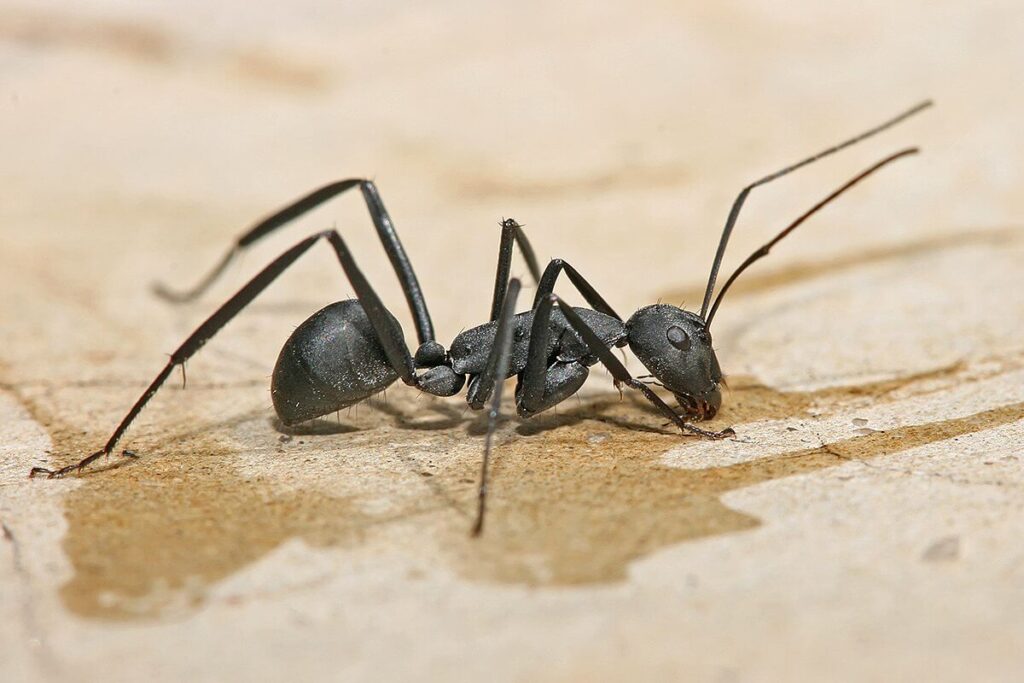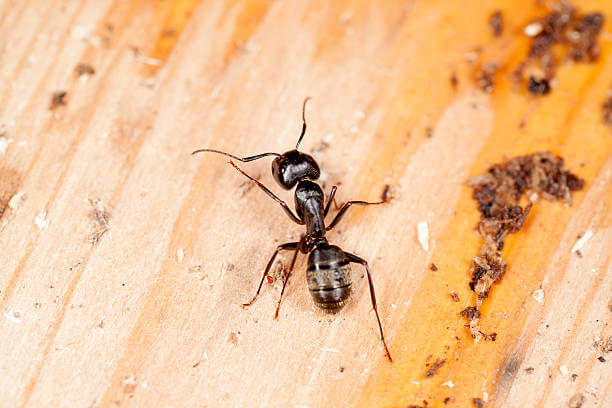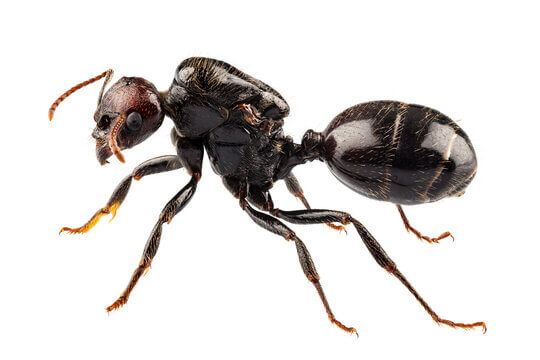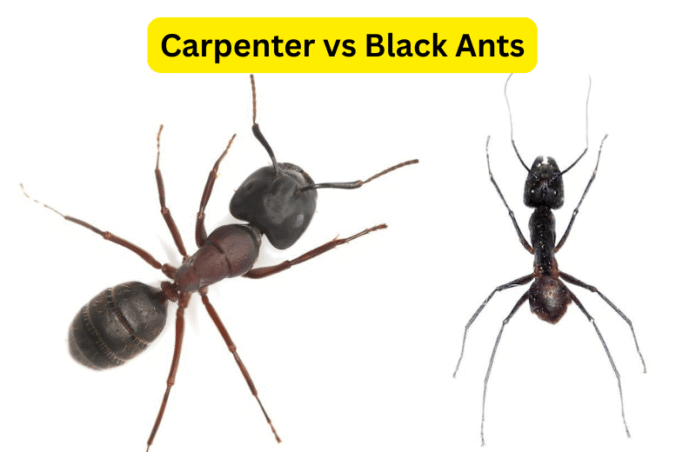When it comes to ants in your home, not all are the same. Carpenter ants vs black ants are often confused, but they differ in size, habits, and even the damage they cause. Understanding these differences can help you identify and handle infestations better.
This guide will explore black ants vs carpenter ants, focusing on how they look, how they behave, and their life cycles. With easy steps, you’ll know how to tell them apart and what to do if you find them in your home.
Appearance
Both types of ants may look similar at first, but their sizes and shapes can help you identify them. You can also find pictures of black ants vs carpenter ants online to make spotting them even easier.
Carpenter Ants

- Size: Carpenter ants are big ant species, ranging from 1/4 to 1/2 inch long.
- Color: These ants can be black, reddish-brown, or a mix of both.
- Shape: They have narrow waists with one single node, making their bodies sleek.
- Traits: You’ll notice carpenter ants have strong jaws they use for transporting wood pieces.
Black Ants

- Size: Black ants are much smaller, often just 1/16 to 1/8 inch in size.
- Color: They are uniformly black or dark brown, with shiny bodies.
- Shape: Unlike carpenter ants, black ants have two nodes in their waists, contributing to a segmented look.
Once you know these characteristics, identifying carpenter ants vs black ants becomes a lot easier.
Behavior
These two ants don’t just look different; they also act in unique ways depending on their needs.
Carpenter Ants

Carpenter ants are primarily nocturnal. They work at night, searching for sugar and honeydew from other insects. They prefer moist, decaying wood and create tunnels within it for nesting. You might notice sawdust-like material near walls or furniture because carpenter ants chew through wood.
These ants don’t eat the wood; they just dig it out, making their nests a big problem if left untreated.
Black Ants
Black ants live in soil but can enter homes to search for food. They love sweets but will also gather grease or crumbs. Active during the daytime, black ants follow visible trails marked by pheromones. You’ll see these ants moving in lines, often heading to a kitchen or pantry.
They don’t dig into wood or cause structural problems. However, they can contaminate food sources, which makes them a nuisance indoors.
Life Cycle
Despite their differences in appearance and behavior, carpenter ants and black ants share similar life cycles. This process includes the following stages:
Carpenter Ants
- Eggs: The queen lays eggs in moist wood.
- Larvae: Eggs become larvae, which the queen initially feeds.
- Pupae: Larvae form pupae, where they grow into adults.
- Adults: Workers emerge and start growing the colony. A carpenter ant colony can take years to mature, with queens living up to 20 years!
Black Ants
- Eggs: Black ant queens lay eggs in soil or hidden crevices indoors.
- Larvae: Worker ants care for the larvae, feeding them as they grow.
- Pupae: The larvae turn into pupae and then adults.
- Adults: Black ant colonies grow quickly and can host thousands of ants at a time.
These overlapping life stages make infestations grow faster if left unchecked.
Read Our Latest Guides on Termites:
- Tiny Baby Termites? Everything You Need to Know in 2025
- What Do Baby Termites Look Like? Termite Identification and Treatment in 2025
- Baby Termites vs Ants? How to Tell the Difference
Final Thoughts
Understanding the differences between black ants vs carpenter ants can help you manage infestations effectively. Carpenter ants primarily cause structural damage by burrowing into wood. Black ants, while harmless to structures, can contaminate your food if they invade your kitchen.
Check your home for wood damage if you suspect carpenter ants. Seal cracks and keep surfaces clean to discourage both types of ants from entering. If you’re uncertain about the next steps, you can always reach out to pest control professionals for help. Follow Us on Facebook, Pinterest and Twitter for the latest updates.
Carpenter Ants vs Black Ants General FAQs
What is the hardest ant to get rid of?
Carpenter ants are tougher to eliminate because they hide well and cause structural damage. Their nests are often deep inside wood, making DIY treatments tricky.
Can a big black ant not be a carpenter ant?
Yes, not all big black ants are carpenter ants. Some pavement ants may look similar. Look for wood damage and frass (sawdust) to confirm carpenter ants.
Why do I suddenly have big black ants?
Large, black carpenter ants often mean they’re nesting nearby. They might invade your home looking for food or water during the warmer months.
What does it mean if you see black ants in your house?
Black ants in your home often signal a food source, like spilled sugar or crumbs. They are harmless but can become a nuisance if left unchecked.
Should I be worried about black ants in my house?
Black ants don’t harm your home structurally, but they can contaminate food. Keep your home clean and seal food tightly to avoid infestations.
Why are there ants in my room if there is no food?
Even when there’s no food, ants may be searching for water or shelter. Fix cracks or entry points to prevent them from coming in.



